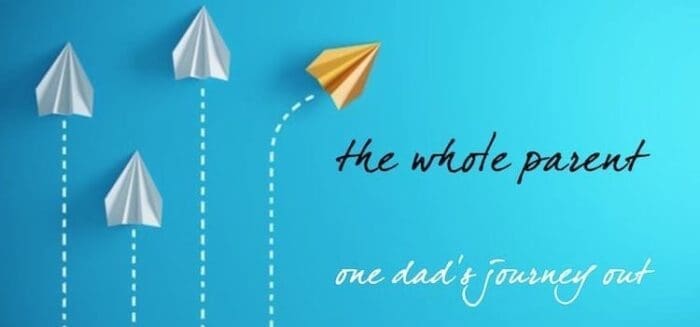I remember reading The Dance of Anger: A Woman’s Guide to Changing the Patterns of Intimate Relationships during my first marriage to a rage-enabled Basque woman. She was less than 100 lbs soaking wet, but she had the fury of only one other person I’d ever known. Cliché coming: My dad was a rageful alcoholic. When he was not drinking he could get mad. But when he was lit his rage knew no bounds. My first wife, was like that, even without drugs or alcohol.
The part I didn’t remember about the book, was the “Woman’s Guide” part. I get it. And I understand how I might have suppressed this subtitle. But I think today, we need volume two of this great book. Let this post serve as my outline.
ONE: We all learn about anger at a very young age. Before we can understand the language we are being given verbal and physical clues about what is a right thing to do and what is a wrong thing to do. For most of us lucky ones, this guidance is done without the injection of anger or physical abuse. For those less fortunate the anger in their lives, both physical and verbal, had no boundaries. There was no safety zone around the young and developing mind, no parent or guiding influence to protect our early learning systems. Physical and emotional abuse are things I know a little about. When the rage and damage enters the personal zone of sexual health and safety, I bow out. Except to know that my first wife had experienced sexual abuse as well. But that anger came from a place of darkness I could never personally understand.
TWO: Relationships with Dad Children crave a relationship with their fathers throughout their lives. Even after the dad has died, we often seek his approval through the relationships with other “father figures.” That’s nothing new. We know this. We can even recognize when this is happening and welcome the mentor of confidence. But the primary relationship with our actual fathers has an impact on our identity as men. Masculinity is defined by our understanding of our fathers. How they treat women (Moms, sisters, girlfriends, waitresses, etc) all form parts of our library of male-knowledge that we refer to for the rest of our lives. And this relationship to our fathers is not just about relationships with women. Our dads drive most of our understanding of how to relate to other men as well. Basically, the idea goes, a father shows his children how to make their way in the world. The mom shows the children how to love in the world.
THREE: Anger In Unhealthy Families When your father shows unhealthy boundaries and exhibits unhealthy amounts of rage, even when they are not directed at you, you begin to form coping mechanisms for how to deal with the incoming emotional assault. In the case of the pre-verbal child, these coping mechanisms are deep and primal. The child within a verbally abusive home resembles the feral animal. Wounded, the animal will cower in the corner either hoping for recovery or death. While the small child doesn’t have this exact same frame of reference, the feelings are of fear of death or some subverted understanding of how reality is supposed to be. As a child, our parents are all we know. If that universe is colored, repeatedly, through anger and verbal outbursts, we begin to believe this is how the world works.
FOUR: Old Defense Mechanisms As we grow older, we begin to uncover parts of our defense mechanisms against anger that are no longer serving us. I consider myself “conflict-adverse” and this is often seen as a weakness in terms of executive leadership. I always score low on my “sense of urgency” personality scores. I keep saying, “I work hard so we don’t have to go into emergency or urgent mode,” but the test doesn’t hear reason, and I am given a lower rating as a project manager or leader. So, I know this about myself, I avoid confrontations. I avoid angering someone. In my second marriage, this resulted in my letting the physical connection and closeness slip out of my relationship without a big ass fight. I should’ve fought. I should’ve been verbal. I was physical and accommodating. And in the end, I allowed her lack of sexual desire to overrule my need for physical touch, sexual and, more critically for me, non-sexual. So as emerging men, we have to dig into our anger issues and find some inner resolve. We have to understand our own dance of anger and begin to make peace with it and make adjustments so we can have healthier relationships, and healthier relationships to our own anger.
FIVE: We’ve all got anger issues. The difference is at what point our issues kick in and render us less effective at staying present (in an argument, for example) or at staying in a marriage (in the case of the angry divorcee). Staying present in the dance of anger, yours or someone else’s is critical to becoming a healthy adult. The layers and layers of armoring have to be unwelded from our hearts, and we have to be willing to feel the fear of being raged at. It is important that we learn to be angry. And it might be even more critical that we learn how to cope with someone else’s anger when it is directed straight at us.
end of part one – here is part 2: The New Dance of Anger: Men and Our Legacy (part 2)
I hope you take an opportunity to leave your feedback and experiences in the comments.
Always Love,
John McElhenney – life coach austin texas
Facebook | Instagram | Pinterest | @wholeparent
reference: The Dance of Anger: A Woman’s Guide to Changing the Patterns of Intimate Relationships
related posts:
- Lean Into Anger: Healing My Father’s Fury
- Soft Boy to Sensitive Man: Redefining Masculinity
- Dear Single Mom: Listen, I Was Your Son, I Get It
- Super Judo Warrior Dad in Divorce
Please check out my books on AMAZON.
image: rage and love, creative commons usage




